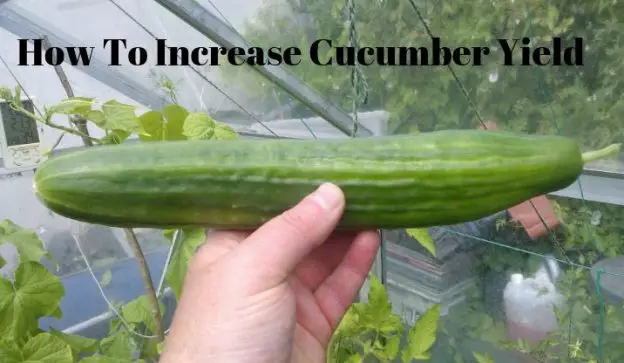Everybody wants to get the most from their plants, and if like me you grow organically, then we have to rely on nature. We can however give nature a helping hand and this is how to increase cucumber yield. All it takes is a few simple tricks to grow more cucumbers so read on for my top tips for increasing cucumber yield.
How To Increase Cucumber Yield
This year I’m only growing 2 cucumber plants, both in the same container and both in my unheated greenhouse. They came from a cheap packet of seeds (50p) I only sowed 2 seeds and they both germinated. This was deliberate as I don’t have space to grow any more than 2 plants.
Growing Cucumbers In A Greenhouse

I have a basic 8ft by 6ft (2.4 by 1.8 mts) unheated greenhouse, it was second or even third hand when I got it. It has gaps around the glass and in some places the frame doesn’t quite join up. Yet in this beaten up old greenhouse my 2 cucumber plants are on their way to producing between 15-20 full sized cucumbers.
Growing Cucumbers In Containers

When growing in containers you have to pay particular attention to the soil because the plants can only stretch their roots so far for nutrients. I add garden lime and epsom salts along with vermiculite to my compost and water well. Once the cucumber plants are flowering I feed with comfrey tea fertiliser every 10 days.
To find out how to make comfrey tea click here or you can use a tomato fertiliser like tomorite etc… It is important to feed container grown plants regularly as they soon use up the soil bourne nutrients. Pay extra attention to watering as well because plants grown in containers in a greenhouse will use up water very quickly.
Use the biggest container you can find and once planted up mulch to conserve moisture and suppress weed growth. I also grow tomatoes in my greenhouse and because cucumbers like it more humid than tomatoes I spray the floor around the cucumbers with water daily. This is possible because I grow my cucumbers vertically which saves on damage and I don’t miss the fruit.
How To Grow Cucumbers Vertically

When planting my cucumber plants I add a stout stick approximately 6ft (1.8mts) high to the container. It is important to do this at the same time as planting to prevent root damage later on. I also tie in string from the stick to the roof supports of the greenhouse and encourage the cucumber plants to entwine themselves.
It’s surprising just how high the plants will grow and how quickly they grow too. Within a few weeks your cucumber plants will be as high as the stick and stretching along the string. Keep a look out for female flowers (they’re the ones with a baby cucumber behind the flower).
How To Increase Cucumber Yield The Secrets
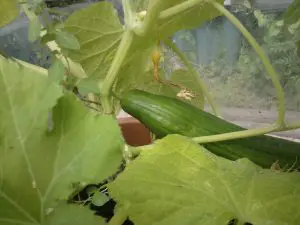
With all squashes and cucurbits you need the female flowers to be pollinated to produce fruit. In regular plants this involves pollen from a male flower being carried to a female flower. This year my cucumbers only produce female flowers but they still need to be pollinated.
Here’s where the secrets to my success come in… I help in the pollination process and there are 2 main methods for this.
Method #1 Insects

Attract pollinators into the greenhouse to pollinate as nature intended and I have to say this is my prefered method. How do I attract pollinators? By planting companion plants that the pollinators like.
So for cucumbers I want bees and hoverflies both of which are attracted to the flowers of 2 herbs, Dill and Basil. I always have basil growing in with my tomatoes which are in pots next to my cucumbers so I just allow a few to flower. The dill I planted in with the cucumber plants and they flowered just before the female cucumber flowers opened.
My greenhouse is usually teeming with hoverflies and bees so pollination is not a problem. I even have 2 watermelon plants growing in the container opposite the cues and they both are producing fruit as well. You see the pollinators are attracted to everything that flowers so they will get to your crop plants as well.
Method #2 By Hand
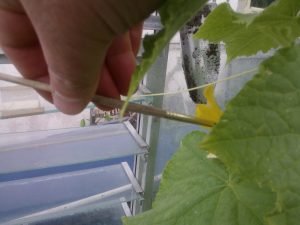
If for some reason you aren’t getting any pollinators around your cucumbers and you have flowers that need pollinating don’t worry. Help is at hand, your hand to be precise and a small paint brush like the ones children use. All you do is emulate the pollinators, take the brush gently from flower to flower get right inside the flower.
Take care but don’t be too concerned the plants are quite robust and if you do knock the flower off remember all plants want to reproduce. So they will produce more flowers as long as it’s not too late in the season.
Pick Fruit Regularly To Increase Yield
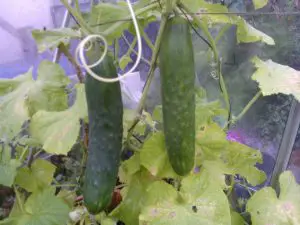
As I just said all plants want to reproduce and that means the fruit getting fully ripe on the plant. By picking fruit regularly the plant will continue to produce more to increase it’s chance of reproduction. So you are sort of tricking the cucumber plant into thinking it’s lost its fruit and has to produce more.
How To Increase Cucumber Yield Summary
The main points are:-
- Use a large container
- Get the soil right
- Water regularly
- Feed regularly
- Add correct supports
- Attract pollinators
- Pollinate by hand
- Pick regularly
I hope these tips are benificial to you and that you get to enjoy home grown cucumbers throughout the season.
Images Of The Plants Used To Attract Pollinators
Dill
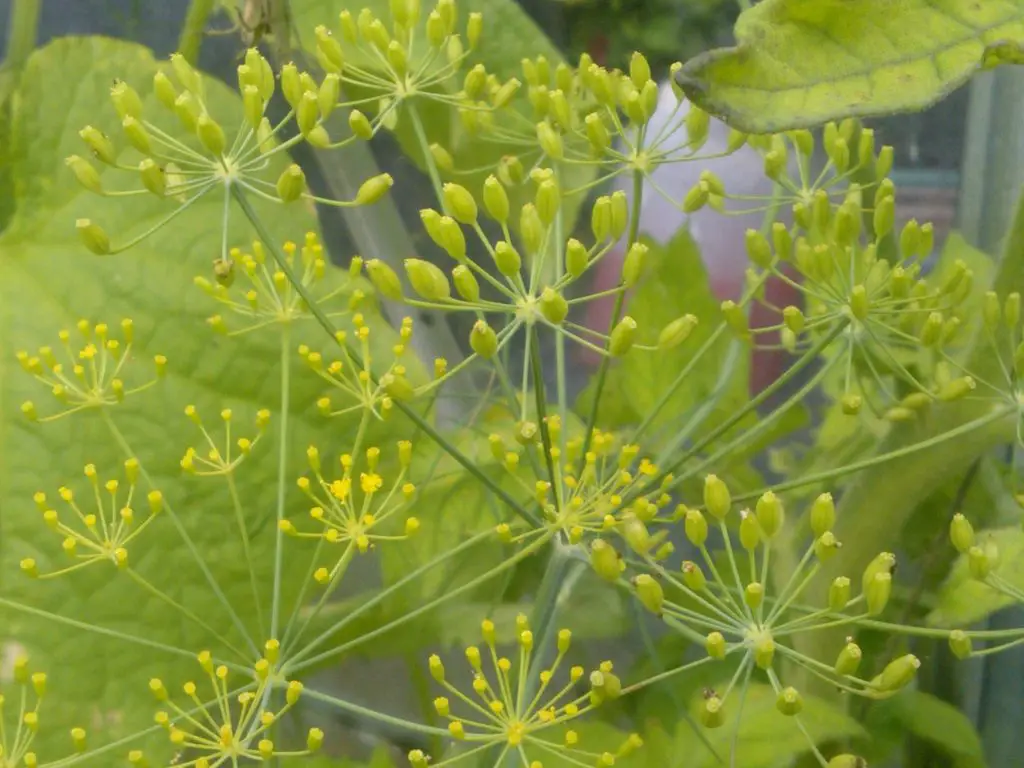
Dill flowers attract many pollinators including bees and hoverflies. I grew this plant from seed and added it to the container with the cucumber plants. My greenhouse is always alive with pollinating activity thanks to these herbs. I don’t use dill in the kitchen, only as a companion plant.
Basil
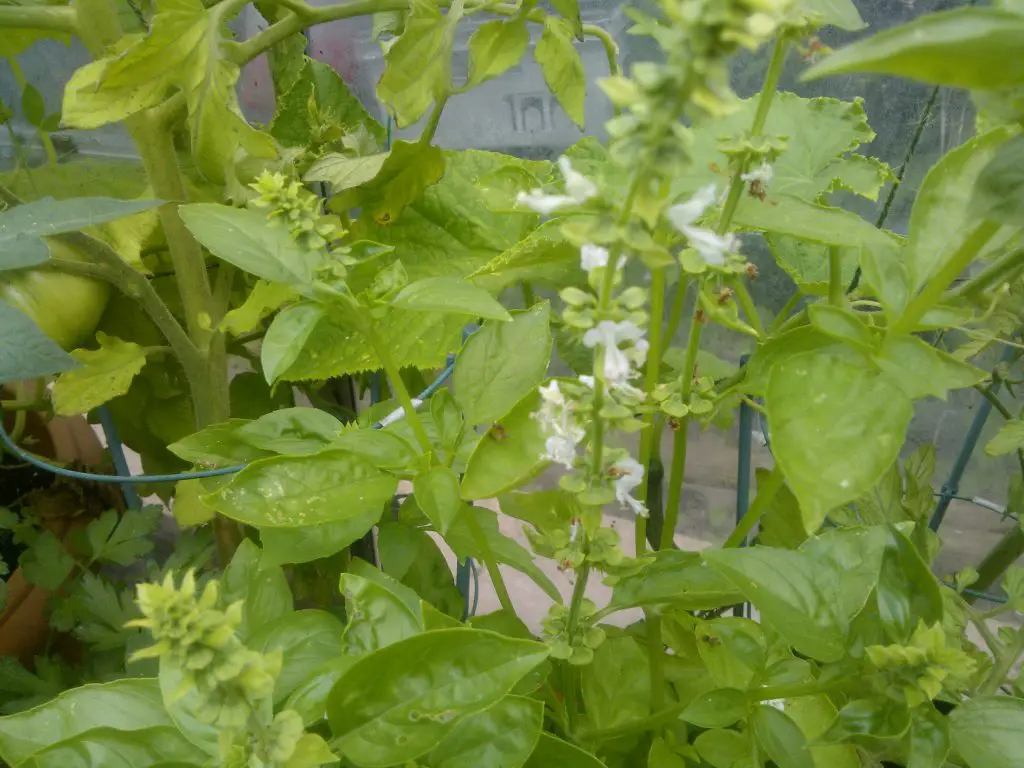
By allowing this basil to flower I have attracted more pollinators to my greenhouse. Another tip is to leave the door and window open all day and if temperatures allow at night too. Basil helps the tomatoes it’s grown in companion with as well as attracting beneficial pollinators.

